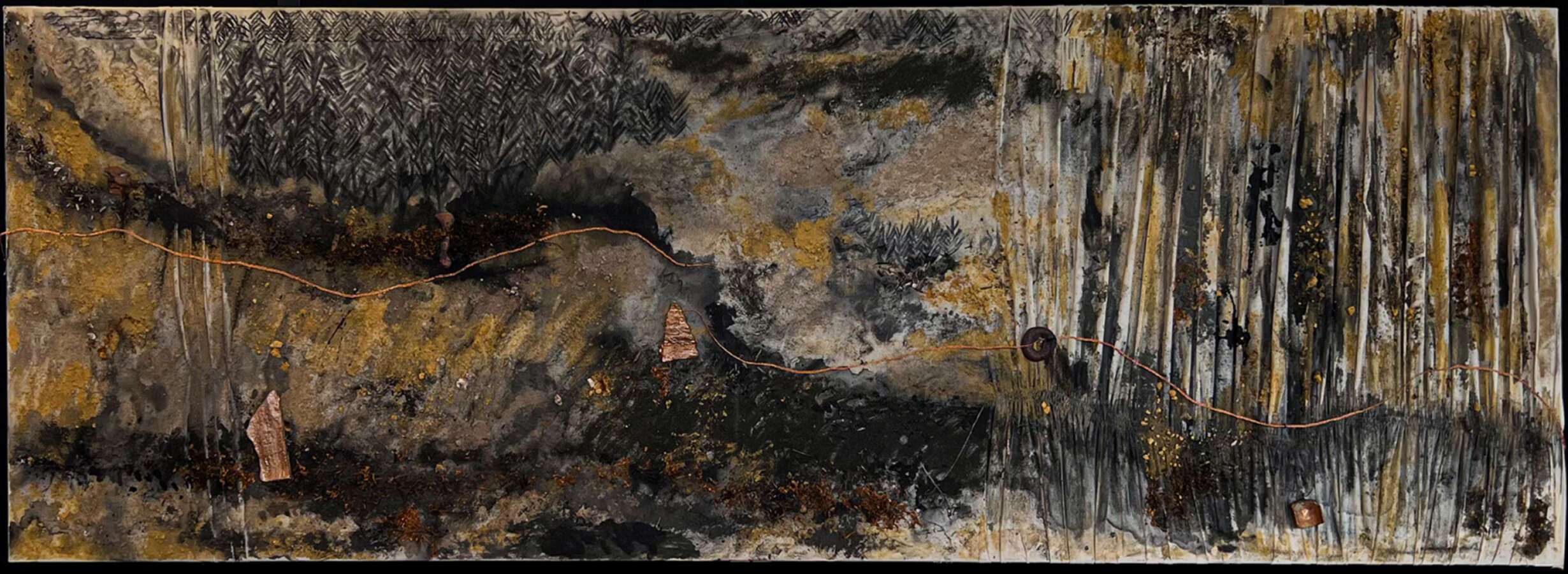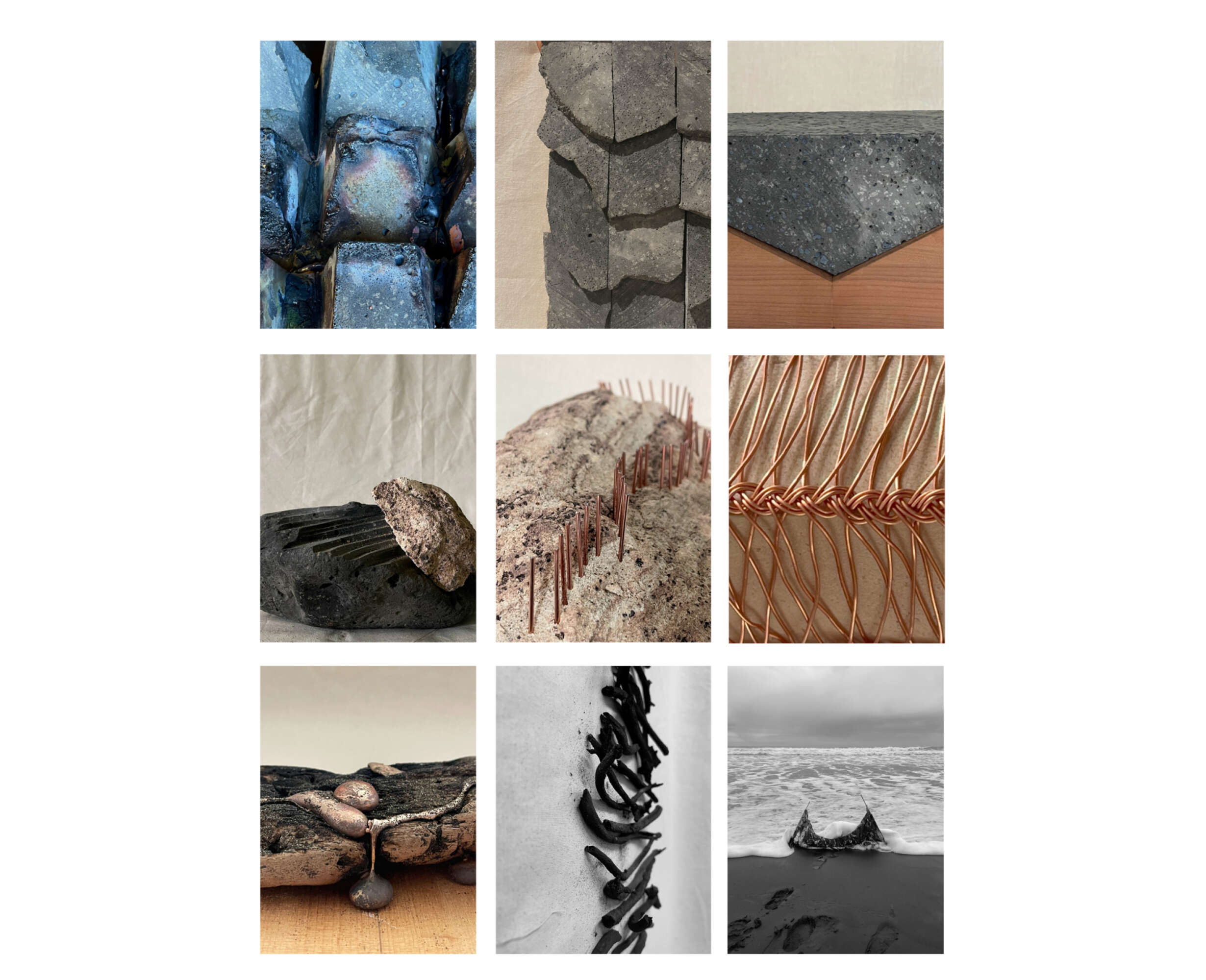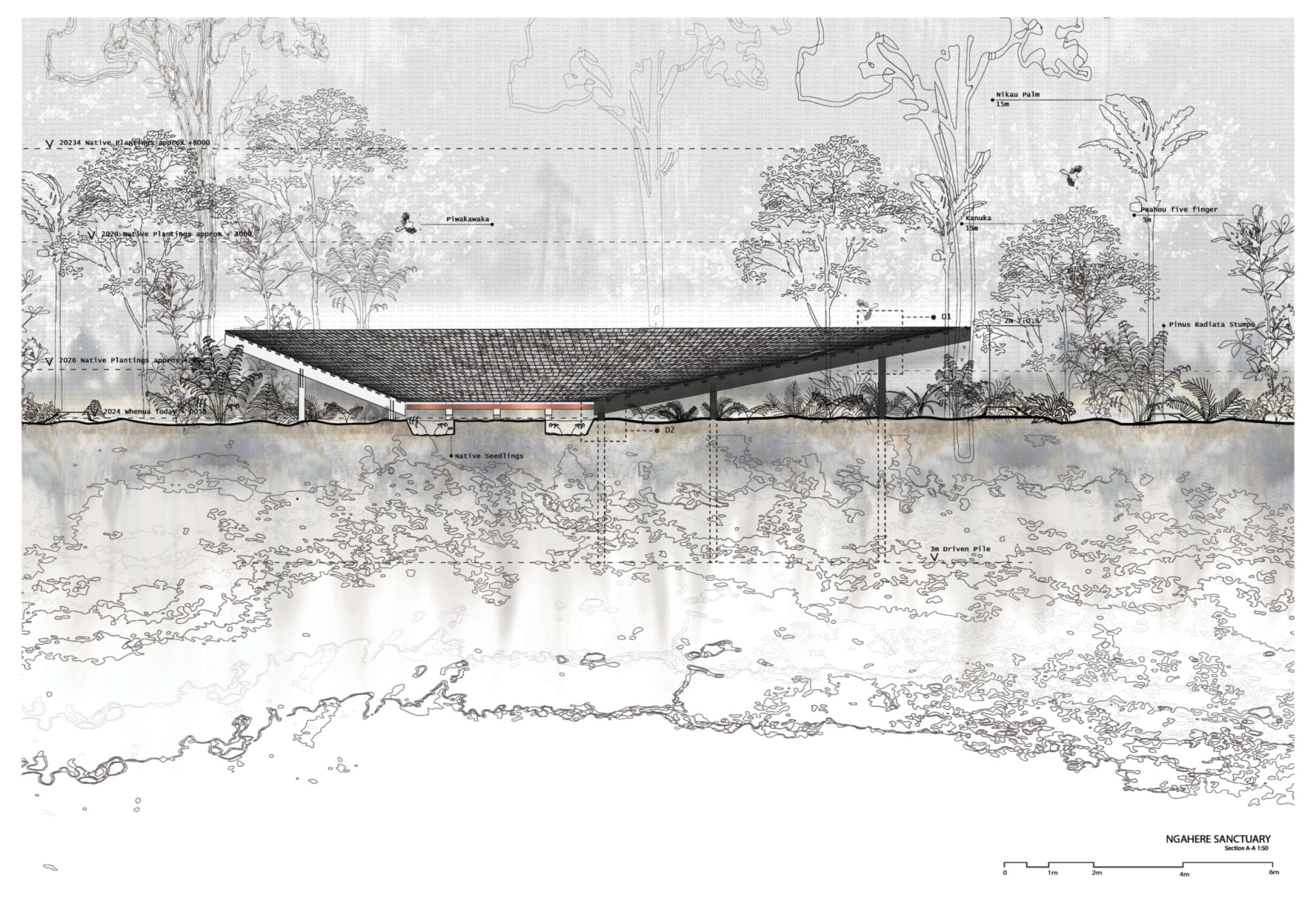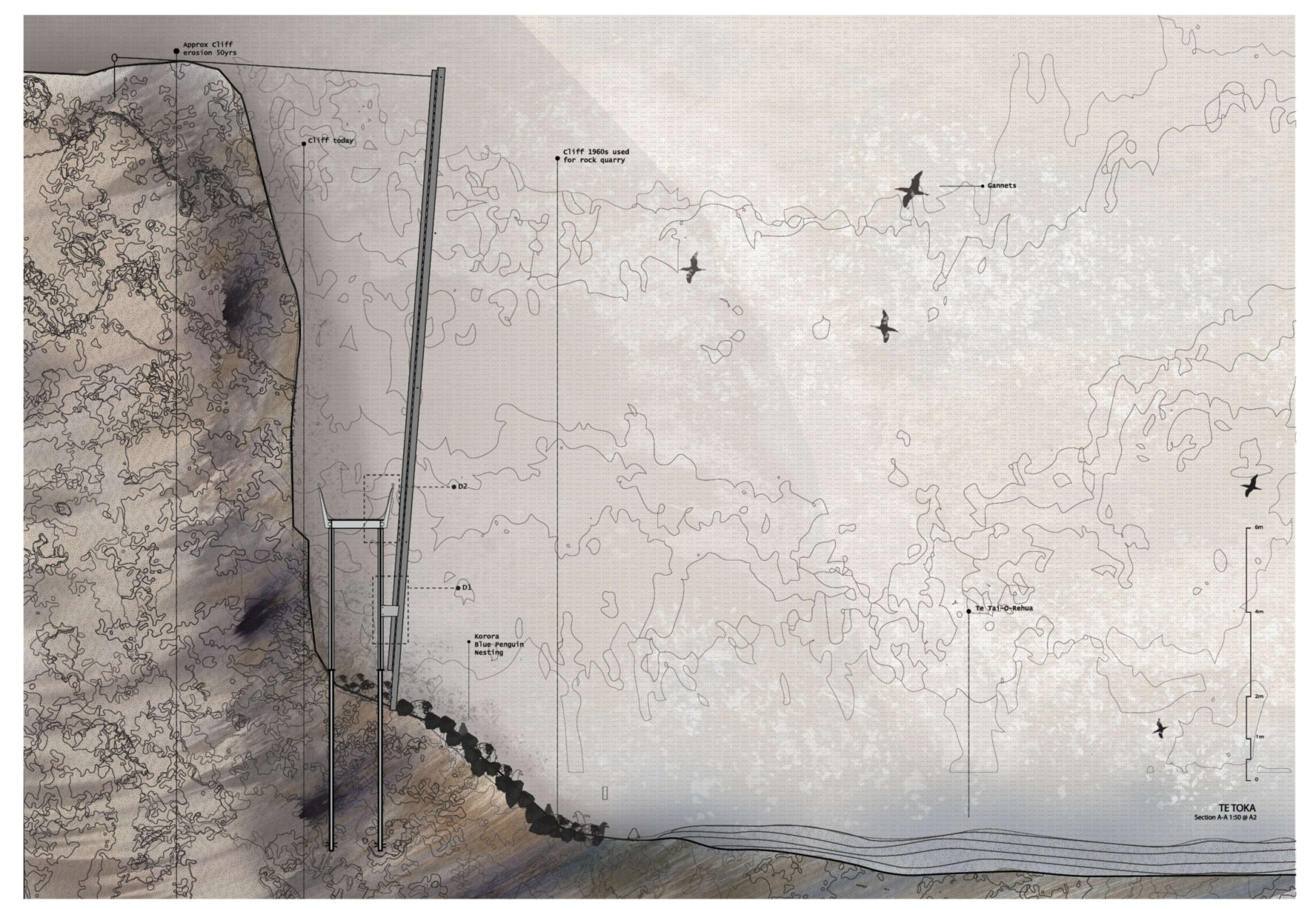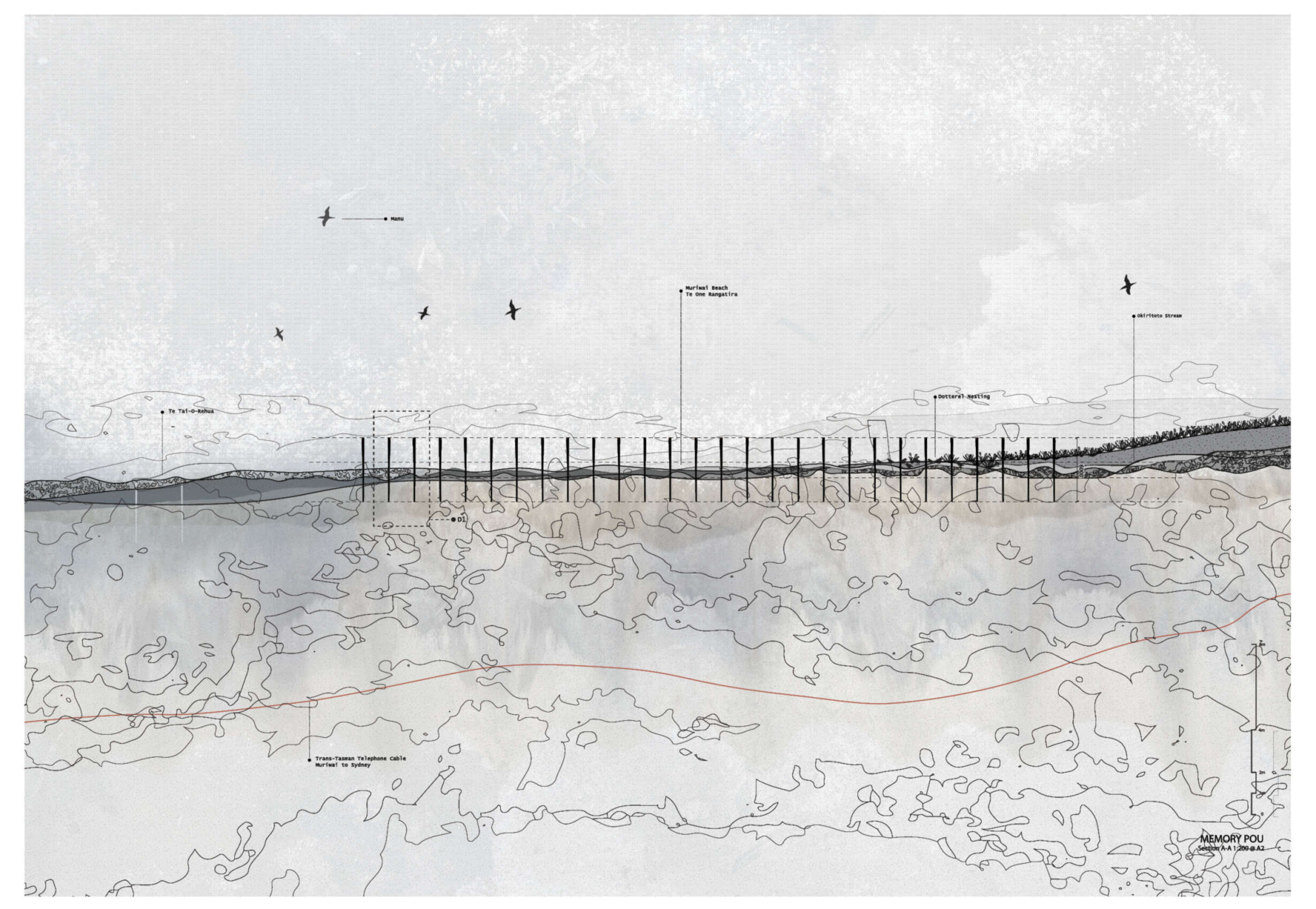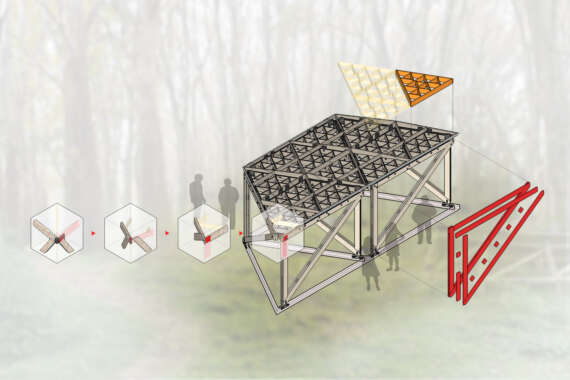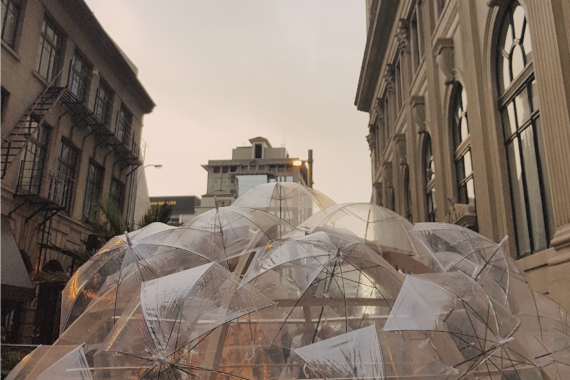Material Reverence: Valuing material histories, and scars of the Muriwai landscape
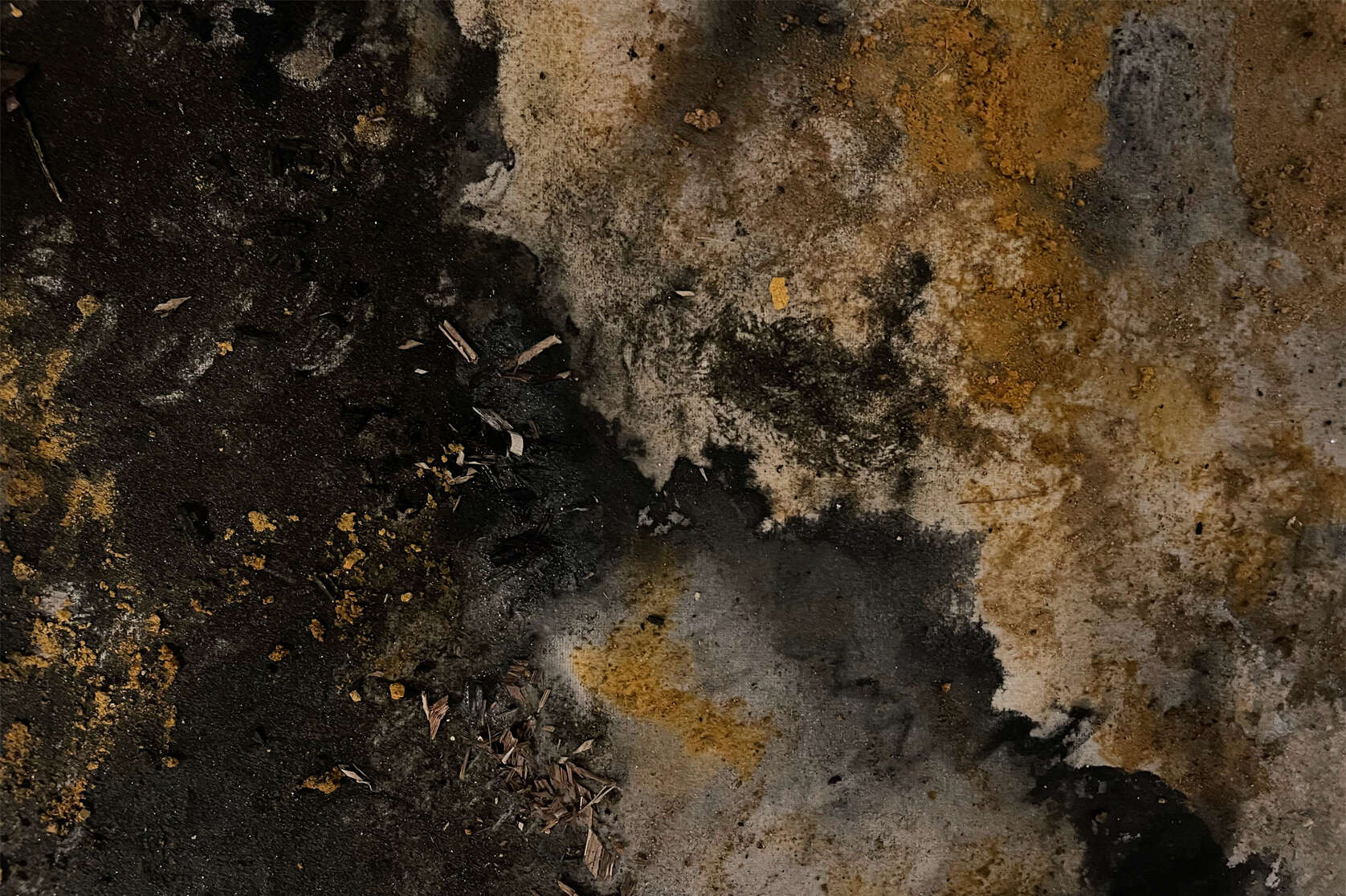
This thesis brings reverence to the material histories of the Muriwai, a rough west coast landscape embedded with rich culture, history and experiences. Using cyclone Gabrielle and resulting landslips as a catalyst, it explores history, movement, and scars of the land, questioning the appropriateness of current modes of architectural production and how practice might better accommodate material properties and histories. Muriwai is a tapestry of woven material, culture, ecological and historical threads that create the whakapapa of the area.
It engages with the physical materials of Muriwai while acknowledging the traumas and scars etched within the landscape. The resulting architectural interventions mark the land and establish interactions between people, whenua and ecosystems. It emphasises land-first, recognising that the land itself is the history, the client and the architecture.







